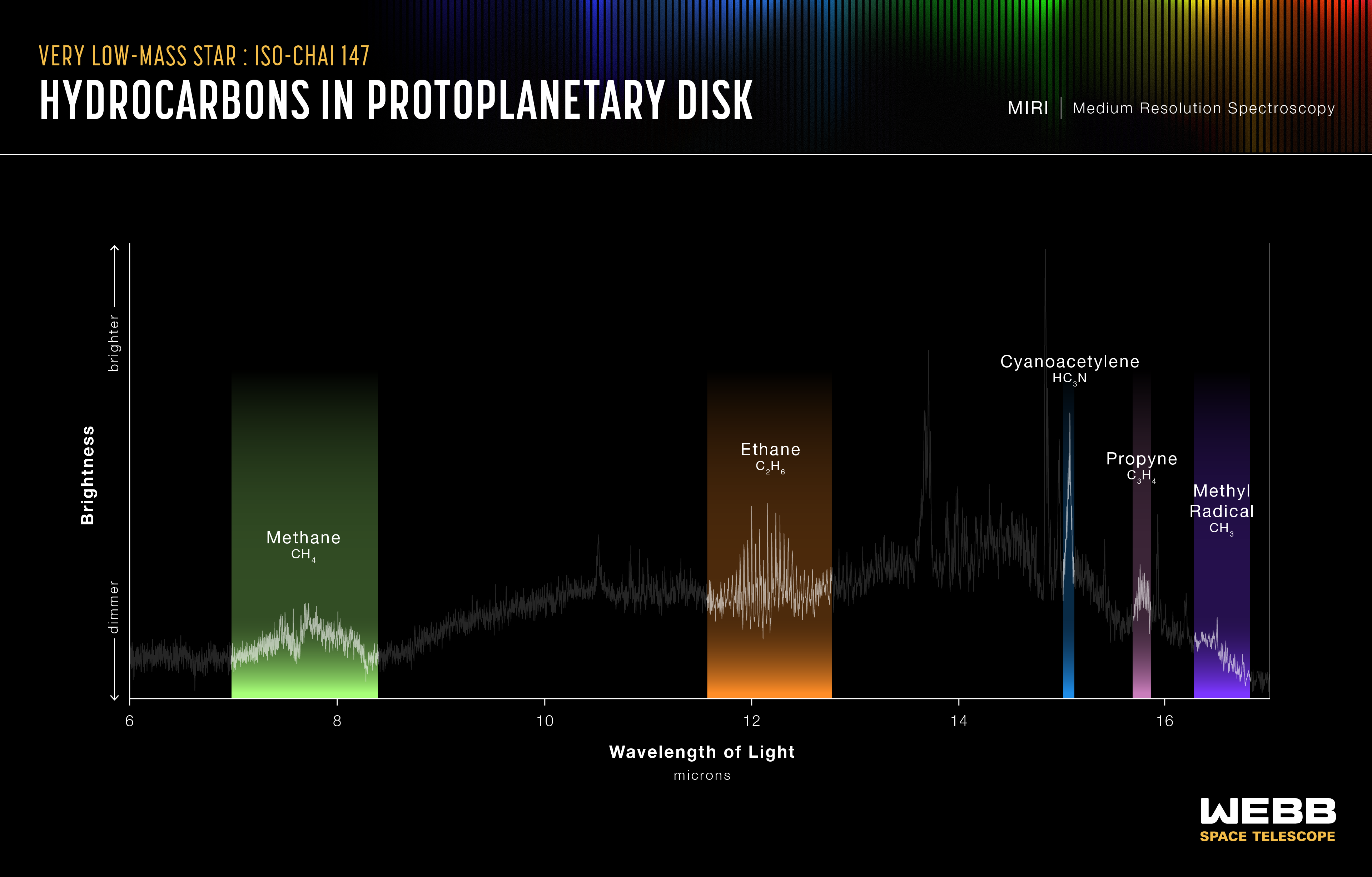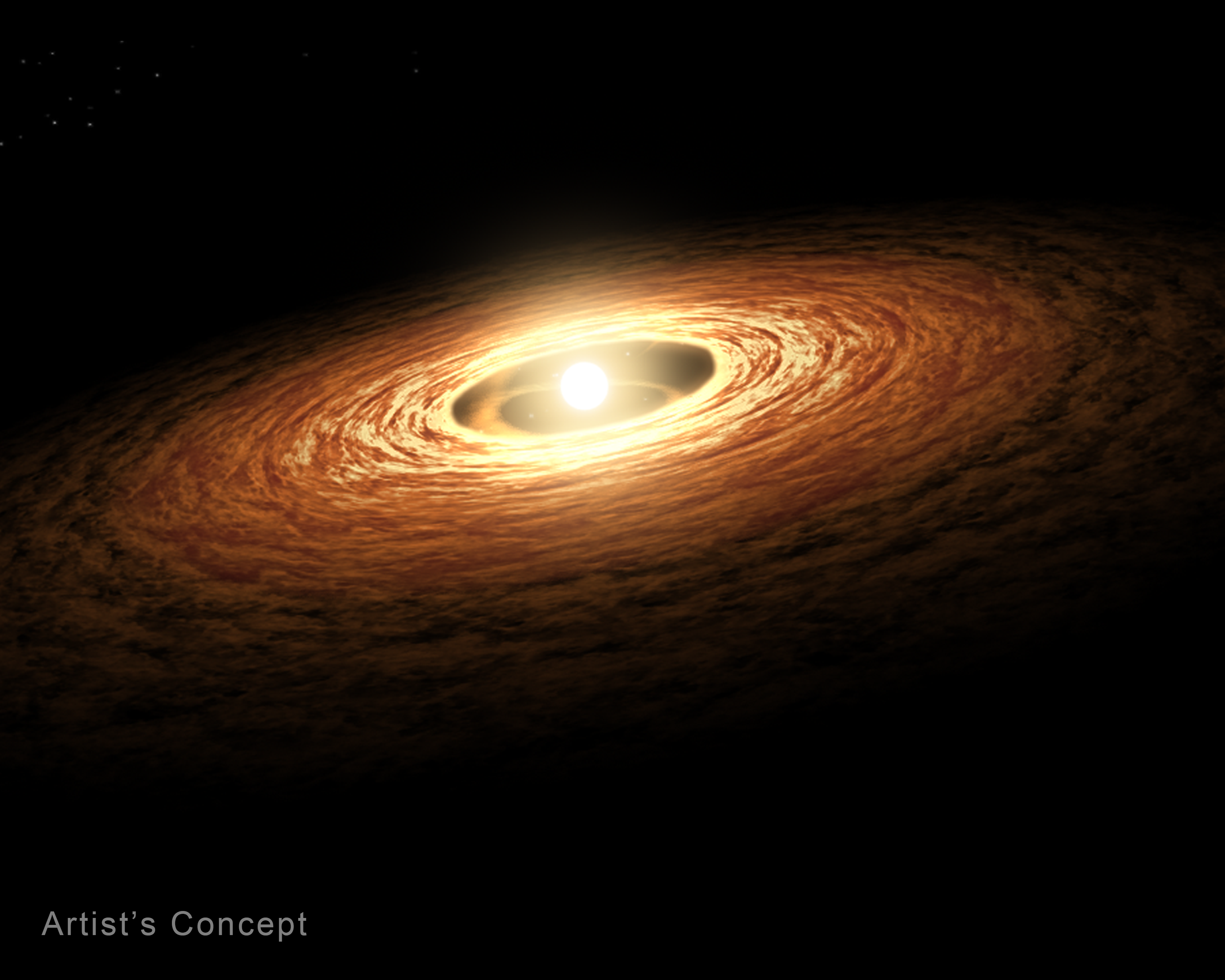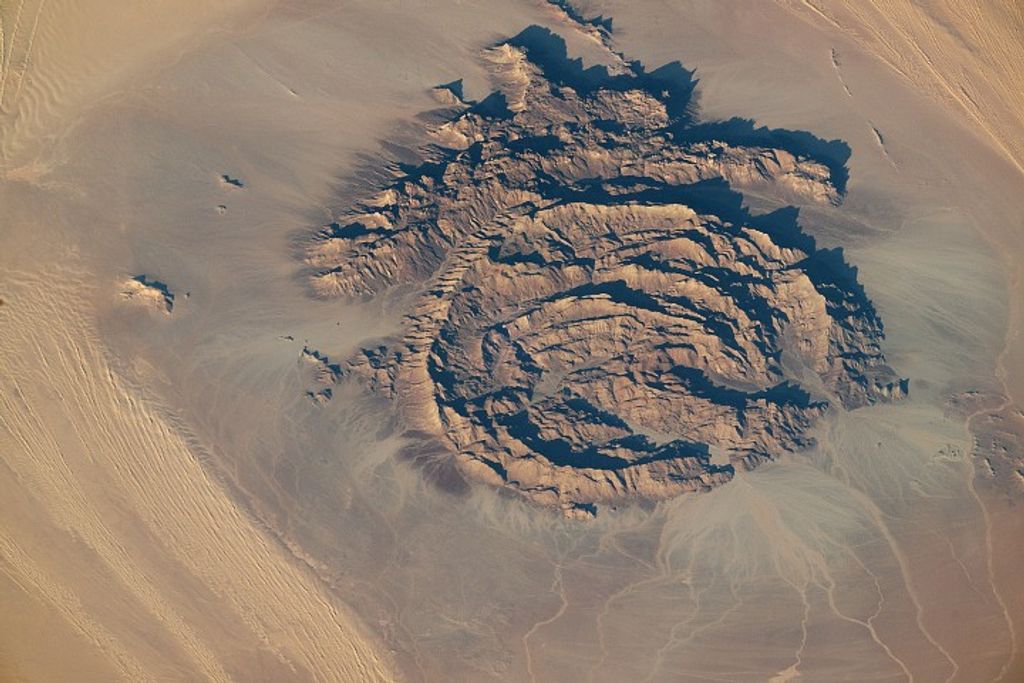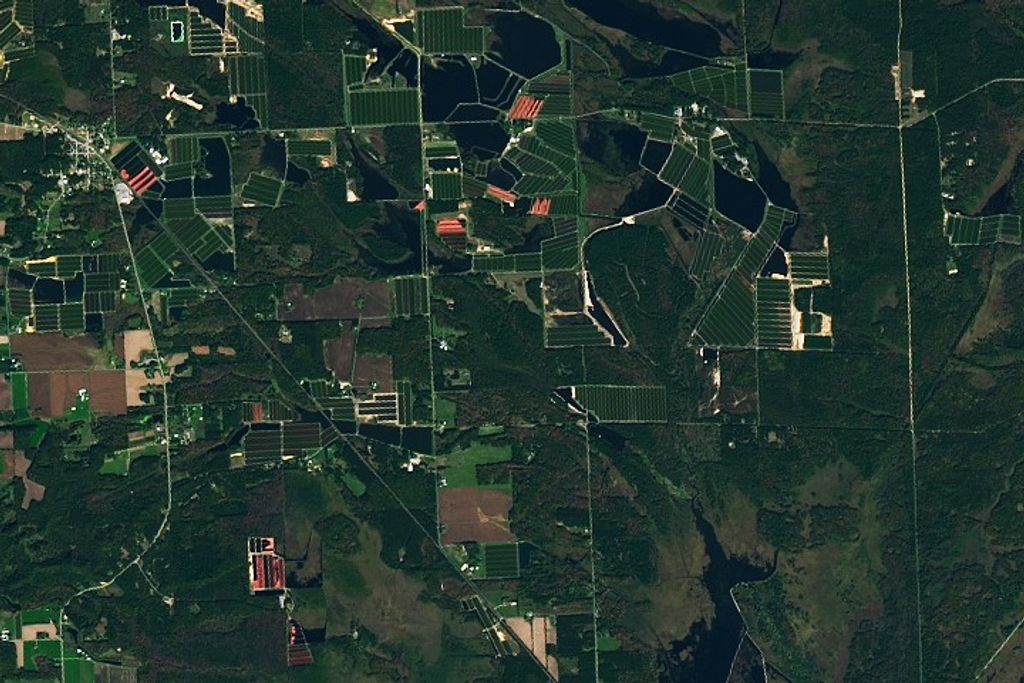1 min read
Hydrocarbons in Protoplanetary Disk Spectrum (MIRI)

This graphic presents some of the results from the MIRI Mid-INfrared Disk Survey (MINDS), which aims to build a bridge between the chemical inventory of disks and the properties of exoplanets. In a new study, a science team explored the region around a very low-mass star of 0.11 solar masses (known as ISO-ChaI 147). They found that the gas in the planet-forming region of the star is rich in carbon. This could mean that the building blocks for planets may lack carbon because all of the carbon-containing chemicals have evaporated and been lost into the surrounding gas. As a result, any rocky planets that form might be carbon-poor.
The spectrum revealed by NASA’s James Webb Space Telescope’s MIRI (Mid-Infrared Instrument) shows the richest hydrocarbon chemistry seen to date in a protoplanetary disk, consisting of 13 carbon-bearing molecules. This includes the first extrasolar detection of ethane (C2H6). The team also successfully detected ethylene (C2H4), propyne (C3H4), and the methyl radical CH3, for the first time in a protoplanetary disk.
This graphic highlights the detections of ethane (C2H6), methane (CH4), propyne (C3H4), cyanoacetylene (HC3N), and the methyl radical CH3.
- Release DateJune 6, 2024
- Science ReleaseWebb Finds Plethora of Carbon Molecules Around Young Star
- CreditIllustration: NASA, ESA, CSA, Ralf Crawford (STScI)
Related Images & Videos

Protoplanetary Disk (Artist's Concept)
This is an artist’s impression of a young star surrounded by a disk of gas and dust. An international team of astronomers has used NASA’s James Webb Space Telescope to study the disk around a young and very low-mass star known as ISO-ChaI 147. The results reveal the richest...
Share
Details
Laura Betz
NASA’s Goddard Space Flight Center
Greenbelt, Maryland
laura.e.betz@nasa.gov
NASA, ESA, CSA, Ralf Crawford (STScI)




























